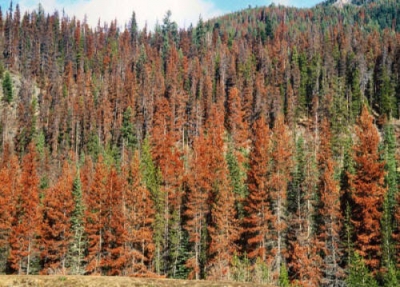
How do you protect yourself against the scorching sun? Maybe by wearing a cap, or carrying an umbrella. You might even apply a sunscreen. We have a variety of ways to choose from, but how would a plant protect itself? It turns out that they are way ahead of us!
As we know, plants use sunlight to make food through the process of photosynthesis. But sometimes that same sunlight can also be harmful for the plant. This happens at higher elevations as there is more radiation at higher altitudes. At lower altitudes the atmosphere absorbs most of the harmful ultraviolet or UV radiation, whereas at higher altitudes the atmosphere is unable to absorb this radiation.
UV radiation can damage the plant’s DNA and prevent the plant from growing properly, but researchers have found that some plants produce a natural sunscreen that shields them from sun damage. This shield is made up from molecules called sinapate esters that plants produce and send out to the outer layers of their leaves. This creates an invisible barrier against UV radiation. What about photosynthesis? Would this also prevent the plants from using the sunlight to make their food? It was found that sinapate esters block UV but not the wavelengths needed for photosynthesis.
So not only does the plant protect itself, it selectively lets light in too. This is one of nature’s brilliant ways of ensuring that plants survive even under harmful conditions.
Picture Credit : Google




